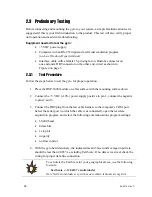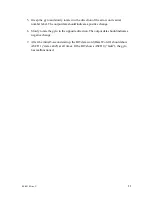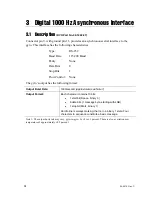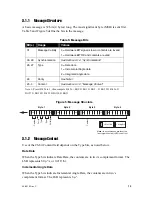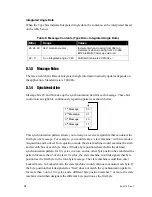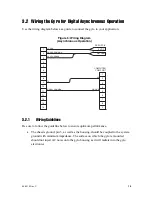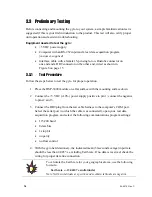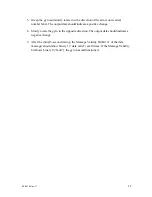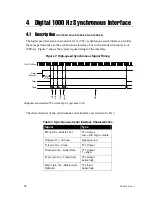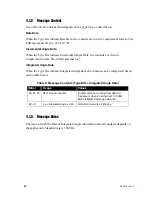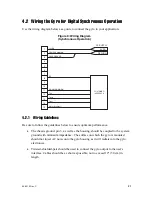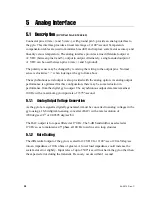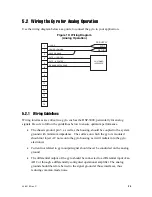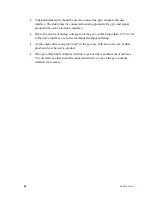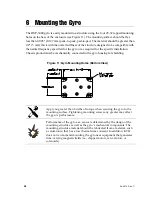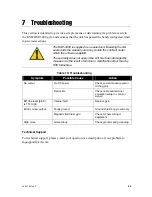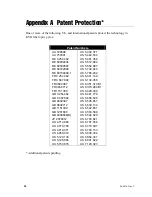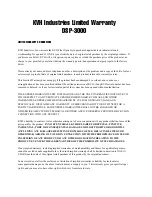
24
54-0215 Rev. C
5 Analog
Interface
5.1 Description
(KVH Part No. 02-1222-03)
Connector pins 4 (rate +) and 5 (rate -), with ground pin 6, provide an analog interface to
the gyro. This interface provides a linear rate range of ±100°/second. Temperature
compensation tables are used to minimize bias drift and improve scale factor accuracy and
linearity versus temperature. The analog interface provides a true differential output at
±2 VDC (between pins 4 and 5), output to output. Alternately, a single-ended output of
±1 VDC can be used between pins 4 (rate +) and 6 (ground).
The polarity sense may be changed by reversing the wiring to the output pins. Normal
sense is clockwise “+” when looking at the gyro from above.
The asynchronous serial output is also provided with the analog option. As analog output
performance is optimized for this configuration, there may be some reduction in
performance from the digital gyro output. The asynchronous output data rate remains at
100 Hz with a maximum gyro input rate of
±
375°/second.
5.1.1 Analog Output Voltage Generation
As the gyro rate signal is digitally generated, it must be converted to analog voltages in the
gyro using a 16-bit digital-to-analog converter (DAC) with a rate resolution of
(200 deg/sec)/2
16
or 0.00305 deg/sec/bit.
The DAC output is low-pass filtered at 170 Hz. The 3-dB bandwidth was selected at
170 Hz so as to maintain a 45° phase at 100 Hz to aid in servo loop closures.
5.1.2 Rate
Scaling
The differential output of the gyro is scaled for
±
2 VDC for
±
100°/sec or 20 mV/deg/sec
into an impedance of 10 K ohms or greater. A lower load impedance could increase the
scale factor error slightly. Input rates of up to
±
500°/sec will not harm the gyro other than
the expected error during the transient. Recovery occurs within 1 second.

